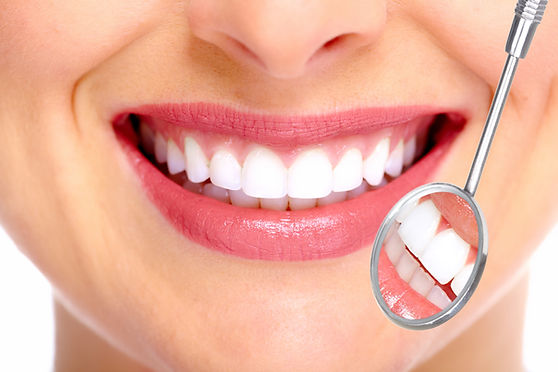
Periodontal Claims
Let’s Work Together
Get in touch so we can start working together.
Periodontal Infection
Understanding Periodontal Infection: A Comprehensive Overview
Periodontal infection, commonly known as gum disease, is a prevalent oral health issue affecting millions of people worldwide. This condition encompasses a range of inflammatory disorders that impact the supporting structures of the teeth, including the gums, ligaments, and bone. While often preventable, periodontal infections can lead to serious complications if left untreated. This article aims to provide a comprehensive understanding of periodontal infection, exploring its causes, symptoms, progression, and available treatment options.
Causes of Periodontal Infection
The primary cause of periodontal infection is the accumulation of dental plaque, a sticky film of bacteria that forms on teeth. When plaque is not adequately removed through regular oral hygiene practices such as brushing and flossing, it hardens into tartar, creating an environment conducive to bacterial growth. The bacteria in plaque and tartar release toxins that irritate the gums, triggering an inflammatory response.
Poor oral hygiene is a major contributor to periodontal infection, but other factors can also increase the risk of developing gum disease. These include smoking, diabetes, hormonal changes (such as those during pregnancy or menopause), genetic predisposition, and certain medications that reduce saliva flow or cause abnormal growth of gum tissue.
Symptoms of Periodontal Infection
The early stages of periodontal infection often present with mild symptoms that may be overlooked. As the condition progresses, however, the signs become more noticeable. Common symptoms include:
-
1. Gingivitis: The earliest stage of periodontal infection, characterized by red, swollen gums that may bleed during brushing or flossing.
-
2. Bad Breath (Halitosis): The bacteria in plaque release foul-smelling gases, leading to persistent bad breath.
-
3. Receding Gums: Gums may start to pull away from the teeth, creating pockets where bacteria can accumulate.
-
4. Tooth Sensitivity: Increased sensitivity to hot or cold temperatures, especially in the affected areas.
-
5. Changes in Tooth Alignment: Shifting or loosening of teeth as the supporting bone weakens.
Progression of Periodontal Infection
If left untreated, gingivitis can progress to a more severe form of periodontal disease known as periodontitis. In this stage, the inflammation extends beyond the gums and affects the supporting structures of the teeth. The body's immune system responds to the ongoing infection by producing substances that, along with bacterial toxins, begin to break down the connective tissues and bone that hold teeth in place.
As the disease advances, pockets form between the gums and teeth, providing a conducive environment for more bacteria to thrive. The immune system's response, coupled with the activities of bacteria, results in the gradual destruction of the bone and tissues supporting the teeth. Without intervention, periodontitis can lead to tooth loss and may even have systemic implications, impacting overall health.
Treatment of Periodontal Infection
The management of periodontal infection involves a combination of professional dental care and consistent at-home oral hygiene practices. The specific treatment plan depends on the severity of the condition.
1. Dental Cleanings (Scaling and Root Planing): In the early stages of periodontal infection, a dental professional may perform scaling and root planing to remove plaque and tartar from the tooth surfaces and roots. This helps to eliminate bacteria and smooth the root surfaces to prevent future plaque buildup.
2. Antibiotics: In some cases, antibiotics may be prescribed to control bacterial infection. These can be administered orally or applied directly to the affected area.
3. Surgical Interventions: Advanced cases of periodontitis may require surgical procedures, such as flap surgery or bone grafts, to repair and regenerate damaged tissues and bone.
4. Lifestyle and Oral Hygiene Changes: Patients are often advised to make lifestyle changes, such as quitting smoking, managing systemic conditions like diabetes, and adopting a thorough oral hygiene routine.
Prevention of Periodontal Infection
Preventing periodontal infection primarily involves maintaining good oral hygiene practices and addressing risk factors. Here are some key preventive measures:
-
1. Regular Dental Check-ups: Routine dental visits allow for early detection and intervention.
-
2. Effective Oral Hygiene: Brushing teeth twice a day with fluoride toothpaste, flossing daily, and using an antiseptic mouthwash help to remove plaque and prevent bacterial growth.
-
3. Healthy Lifestyle Choices: Avoiding tobacco products, maintaining a balanced diet, and managing conditions like diabetes contribute to overall oral health.
-
4. Awareness of Risk Factors: Understanding and addressing risk factors, such as hormonal changes and genetic predisposition, can help reduce the likelihood of developing periodontal infection.
Periodontal infection is a common and potentially serious oral health issue that requires attention and proactive management. Understanding its causes, symptoms, and progression is crucial for early detection and intervention. By prioritizing good oral hygiene practices, regular dental check-ups, and addressing risk factors, individuals can significantly reduce the risk of developing periodontal infection and its associated complications. Taking a comprehensive approach to oral health not only preserves the integrity of the teeth and supporting structures but also contributes to overall well-being.
Let’s Work Together
Get in touch so we can start working together.
